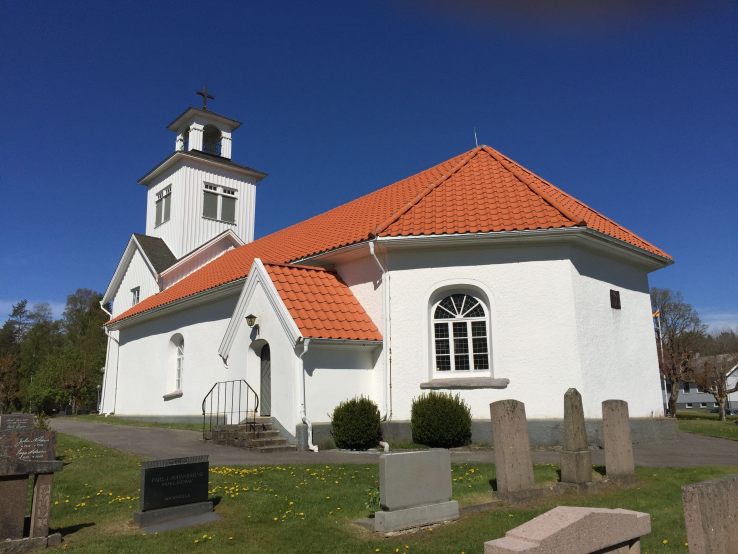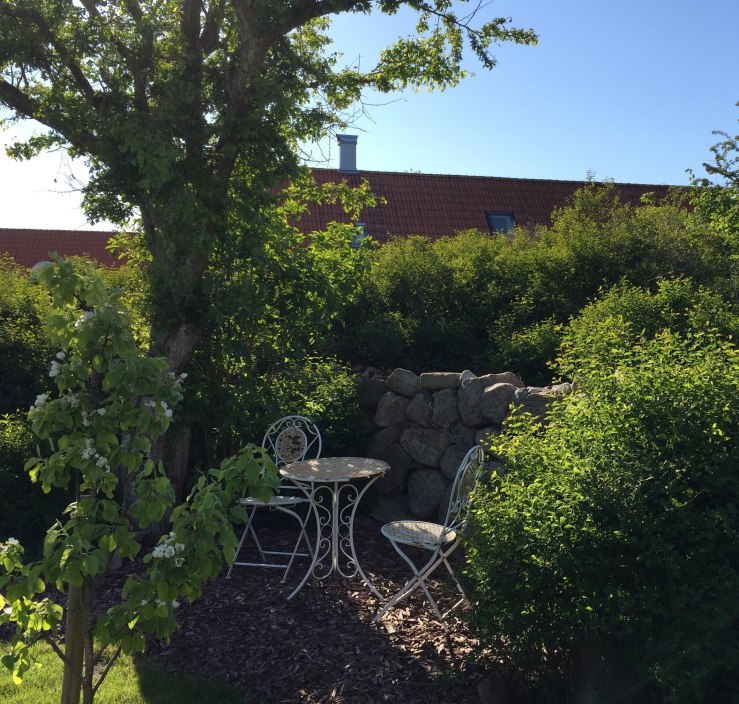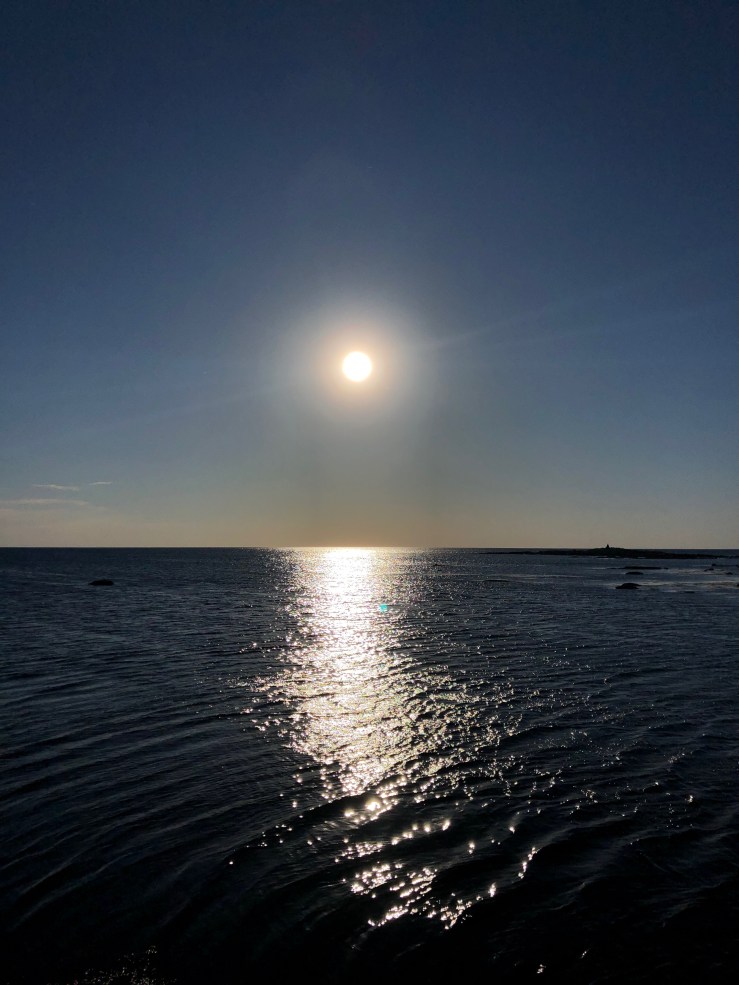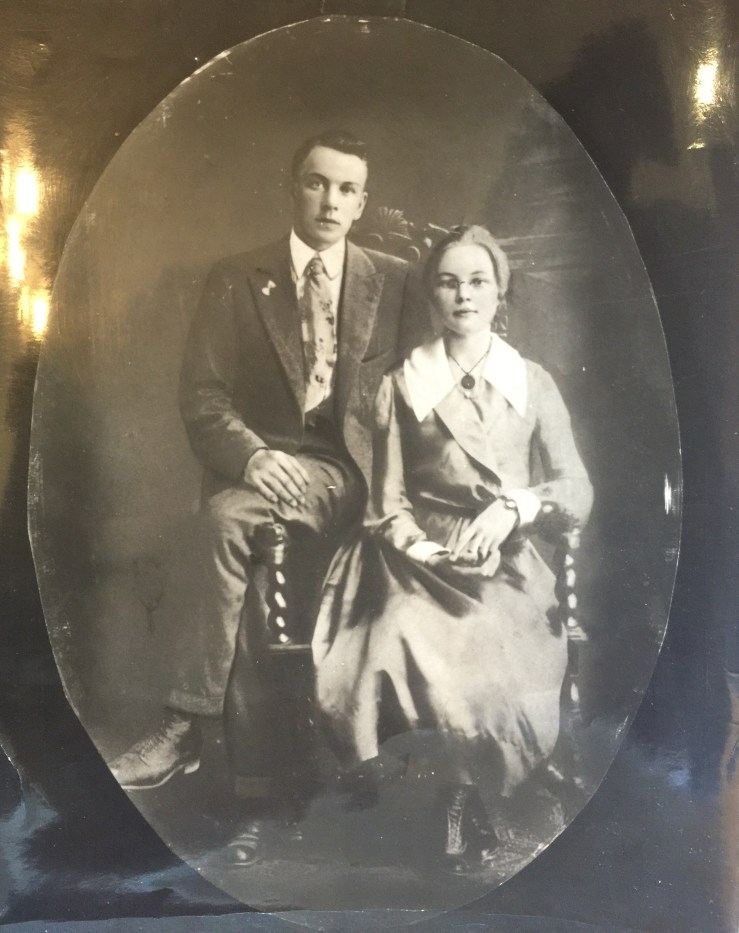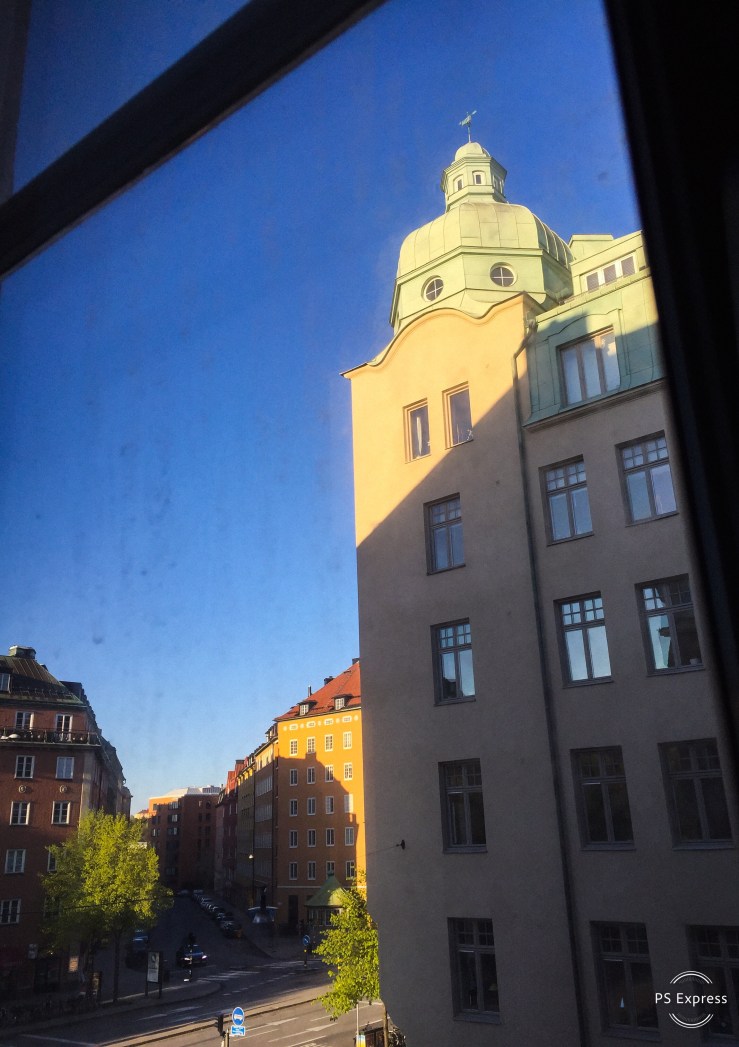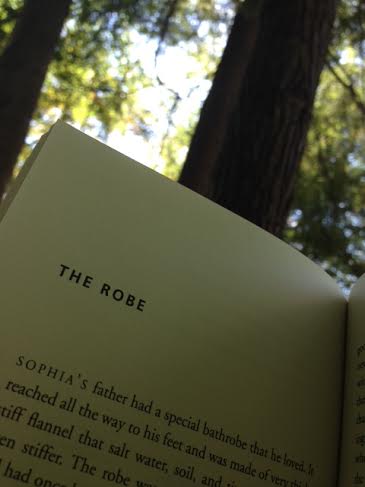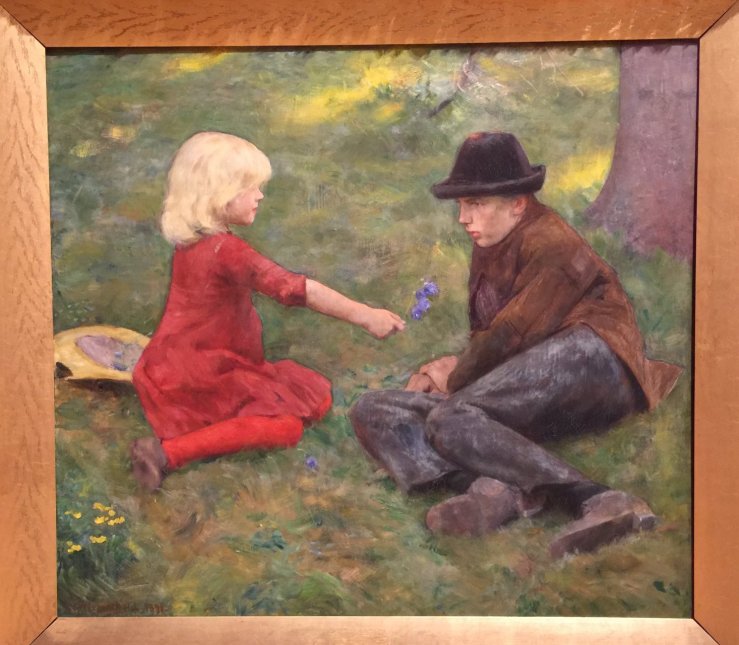
…And as the smart ship grew
In stature, grace, and hue,
In shadowy silent distance
grew the Iceberg too.
– Thomas Hardy, The Convergence of the Twain
Morfar – Life, death and the Titanic
“Every individual born to the Dagara [an African ethnic group] is mentored and supported into maturing into an adult who fulfills their purpose. From the moment a person is born, others within the community had a responsibility to assist that person in delivering their gift to the world. Everyone in the community is responsible for and has an integral role in insuring that each person’s genius is awakened, nurtured, and mentored. If this is not done, the person as well as their genius dies. If any individual’s gift is not delivered it then falls to that person’s descendants to do so.” – Sandra Easter, Jung and the Ancestors: Beyond Biography, Mending the Ancestral Web
I had goosebumps three times on our trip to research family history in Sweden: when our cousin, Jan, showed us the Bible my great, great, great grandfather gave to Älekulla Church; when Louise led us to my grandmother’s house on the North Sea; and when my son and I were invited to Gunvor and Irene’s home in Fritsla to see what we could find out about my grandfather’s family. This is the story of our time in lovely Fritsla, the ancestral town that embraced Andrew and me.
Ivar Emmanuel Häkansson, my grandfather, was born in Fritsla in 1892 and lived there the first few years of his life. Of my four grandparents, I knew the least about him. Grandpa (or Morfar, as we called him when we were children) had been a loner, a hard worker but a solitary man who liked his drink. By the time I knew him, he rarely spoke. Morfar had no family back in Sweden with whom he kept in touch, unlike my grandmother, who exchanged letters with her Swedish siblings over the years. When I began my trip to Sweden, I knew only that Morfar had apparently been orphaned in a flu epidemic and sent to live with his maternal aunt and uncle in another Swedish town, Orby, at a young age.
I had mixed feelings as Andrew and I approached Fritsla, a small, quiet town nestled in the countryside. My Swedish friend, Amelie, whom I’d met on the plane, and her father, Pär, had done some research about my grandfather’s family, and they emailed biographical information to me when I was in Stockholm. I’d learned my grandfather’s childhood had been filled with more grief and loss than I’d expected.
They had discovered that Morfar’s family lived in an area of Fritsla known as Aratorp, where my great grandfather, Håkan Nilsson, had been a farm hand. Using Google Maps, Andrew and I headed to that area first. We couldn’t find a specific house or farm, but there was a street with the word Aratorp in it, and we followed that until it became a dirt road ending in meadows and woods. Perhaps my grandfather had been born on a farm or in a tenant home that had once stood nearby.


Next, we went to Fritsla Church near the center of town, where Morfar had probably been baptized. It was closed, so we walked around the cemetery, reading the old Swedish names on the headstones. If one or both of my grandfather’s parents had died in Fritsla, they were probably buried here.

By this time, it was noon. Andrew and I decided to stop at the café in the village for lunch, and that is when we got our lucky break.
Centralkafét is an old-fashioned café attached to a gorgeous little floral shop, Fritsla Blomsteraffär. While Andrew and I picked out what we wanted from the sandwiches and salads in the plate glass display case, I mentioned that my grandfather had been born in Fritsla, and we were researching family history.
After we finished eating, our waitress, Camilla, introduced herself, as did Ulrika, the baker and florist. They wanted to know more about my grandfather. Before we knew it, they’d called the church, and they’d called someone else.
“The church is open for cleaning this afternoon,” Camilla said. “You can go in and see it.”
“And you should meet Gunvor,” Ulrika added. “She’s our local history expert. She said you can head over now if you’d like.”


Gunvor’s home turned out to be one of the quaint older homes Andrew and I had admired while driving around. She and her daughter, Irene, were gracious and welcoming, and I felt an immediate connection. Gunvor, especially, had the strong, patrician bearing and the lilting Nordic accent I remembered from the ladies who attended our Swedish Lutheran church when I was growing up near Cleveland, Ohio.
Gunvor soon realized we needed a true expert’s help and so she called Jan-Åke Stensson, the local genealogist who, believe it or not, came right over with his laptop and his extensive knowledge of Swedish ancestral records. Gunvor, Irene, Jan-Åke, Andrew, and I sat at the kitchen table and talked for a couple of hours.
Jan-Åke told us about Swedish history – how a quarter to a third of the Swedish population immigrated to America. My grandfather, though, had not been part of this great migration, according to Jan-Åke. He left Sweden later, during a time of greater prosperity. (Given my grandfather’s situation – as you’ll see below – I understand why he wanted a fresh start in America.) Jan-Åke also explained Sweden’s confusing surname conventions before 1900, which makes doing Swedish ancestral research challenging. We talked about the many Swedes of my grandfather’s time who owned no land of their own, but were farm hands and tenant farmers.
We learned about Irene and Gunvor’s relatives, too, and how the great exodus from Sweden split their family tree. Irene told us her grandfather (or possibly her great grandfather – I don’t recall) had an enormous number of siblings – well over a dozen. Every single one of them – except for her (great) grandfather – came to America. Because of this, a loneliness haunted him all of his life. I’d never really thought about the personal losses incurred by those who stayed behind. As Irene told us this story, I had a sense of a culture splitting in half, and the psychic cost on both sides. Sitting next to my son, I was moved by the idea that, over a hundred years later, we were reconnecting with our lost culture and ancestry.
Before we departed, Irene gave us a tour of her mother’s gardens and their rustic outdoor dining room. I wanted very much to linger and deepen our new friendships – I told myself I’d return one day. Andrew and I prolonged our Fritsla stay a bit by returning to the café for fika (Swedish dessert and coffee) and to tell Camilla and Ulrika about our visit with Gunvor and Irene.
I had a sense of a culture splitting in half, and the psychic cost on both sides.
A week or so later, Jan-Åke sent me the biographical information below, confirmed independently by Amelie and her father, as well as by my cousin, Jan.
When we’d visited Älekulla with Cousin Jan, where my grandfather’s ancestors went back several generations, I’d sensed a deep connection to the land, church, and community.
But my grandfather’s family, headed by his father, Häkan Nilsson, was buffeted by illness, uprootedness, and, likely, poverty. My great grandfather, Häkan, moved from job to job to job (mostly as a tenant farmer and a farm hand) and from town to town, trying to support the family.
I hadn’t known that my grandfather had so many siblings. Morfar was the youngest of seven children – and by the time he was nine years old, all of his brothers and sisters and both of his parents would be dead.
Eight years before Morfar was born, Häkan and his wife, Edela (or Edla) Brita Lardsdotter, lost a son, Karl, at age 7 months, when they were living in the town of Orby.
They moved to Fritsla in February of 1892 with at least five of their six children, and my grandfather was born on June 5.
Morfar’s oldest brother – Häkan and Edela’s firstborn, Johannes – died at age 19 in Orby (cause unknown) when Morfar was two years old. I do not know if Johannes was emotionally close to my grandfather, or if they barely knew each other.
When my grandfather was four years old, his father, Häkan, died of tuberculosis, on June 14, 1896 in Fritsla – a few months after he had started a new job as a farm hand, and a week after my grandfather’s birthday. Eleven days after Häkan died, my grandfather’s brother, Linus, died of tuberculosis at the age of sixteen. Three weeks after that, on July 16, my grandfather’s sister, Anna Eleanora, died of tuberculosis at the age of eighteen. (As I write this, it is the 123rd anniversary of her death.)
Three years later, my grandfather moved to Orby with his two sisters, Hilda and Josefina, and his widowed mother, Edela. His mother died of an unknown cause six months later on April 9, 1900. Perhaps she died in the flu epidemic my grandfather spoke of.
Morfar, now 8, and Josefina, 11, were sent to live with their maternal aunt and her husband, Lotta and Johan August Svensson. Morfar’s sister, Hilda, age 15, was sent to be a maid for a local tenant farmer, where she died of an unknown cause a little over a year later.
According to local historical records, Morfar’s uncle, August, was well liked by the neighborhood children, and he once helped save a girl who was drowning in a bog. He had only one arm, and had been a railway builder and night guard at the local power plant. When Morfar and his sister, Josefina lived with him, he was a tenant farmer, owning no land, with children of his own to raise. Who knows what my grandfather’s uncle was really like, because Morfar had always said his uncle was mean.
On May 11, 1902, Josefina died at age 13 of an unknown cause, and my grandfather lost his last living family member. Pär and Amelie found this quote by the pastor in the local history records: “The parents of the girl are both dead, and herself, she is destitute!” (“Flickans båda föräldrar äro döda, och själv är hon utfattig!”)
My grandfather turned nine a few weeks later.


“The parents of the girl are both dead, and herself, she is destitute!”



Morfar left Sweden forever on April 4, 1912 when he was nineteen, bound for America. He’d always said he was supposed to sail on the Titanic, but he was delayed, possibly by a strike in England. He sailed on the Mauretania instead, a few days behind the Titanic, probably third class. His ticket would have cost about $17.
I’m still checking dates, but the Mauretania left Liverpool, England on April 10, bound for New York a few days behind the Titanic. The Mauretania happened to be carrying the Titanic’s cargo manifest. It was docked in Queensland, Ireland when word came that the Titanic was sinking. First-class passengers held a vigil for the Titanic’s victims and raised $500 for the families. Second-class passengers held their own vigil.
I wonder if word came down to the third-class passengers in steerage about the Titanic. If somehow it did, I can only imagine what Morfar must have thought. Maybe he’d always had survivor’s guilt for being the only one in his family still alive. Perhaps he’d always expected the other shoe to drop – that, inevitably, he’d lose his life, too.
In 1997 or 1998 near Cleveland, Ohio, some of Morfar’s many great grandchildren gathered in their pajamas in front of the TV to watch The Titanic. While Kate Winslet and Leonardo DiCaprio hoped desperately for a lifeboat in those icy waters, I can now imagine another scene – a nineteen-year-old Swedish boy, somewhere below deck on another boat far away. Maybe, upon finding out about the Titanic, Morfar looked upon his having sailed on the Mauretania instead as a sign, a gigantic, long-awaited affirmation from the universe. Yes, he was supposed to live. A whole new life awaited him in America.
 “Each individual life matters. From the perspective of the ancestors, each descendent is the whole reason they have existed at all. We are each individual ‘historic fragments’ whose lives are interwoven into the lives of our ancestors reaching back to the beginning of creating. Knowing where one comes from in the broadest and deepest sense informs who one is and the direction of one’s life. Within these connections, as one finds oneself in the crowd of ancestral spirits, the meaning of our suffering is revealed in ways that assist us in embracing our fate and embodying and fulfilling our destiny. Simply said – the ancestors, as part of our larger community, support and guide us in living the life we were born to live. This work connects us in ever widening circles to our origins, has the potential to reconnect us with the soul of the world and ultimately leads us back to ourselves and our individual, unique and necessary life.” – Jung and the Ancestors
“Each individual life matters. From the perspective of the ancestors, each descendent is the whole reason they have existed at all. We are each individual ‘historic fragments’ whose lives are interwoven into the lives of our ancestors reaching back to the beginning of creating. Knowing where one comes from in the broadest and deepest sense informs who one is and the direction of one’s life. Within these connections, as one finds oneself in the crowd of ancestral spirits, the meaning of our suffering is revealed in ways that assist us in embracing our fate and embodying and fulfilling our destiny. Simply said – the ancestors, as part of our larger community, support and guide us in living the life we were born to live. This work connects us in ever widening circles to our origins, has the potential to reconnect us with the soul of the world and ultimately leads us back to ourselves and our individual, unique and necessary life.” – Jung and the Ancestors
***
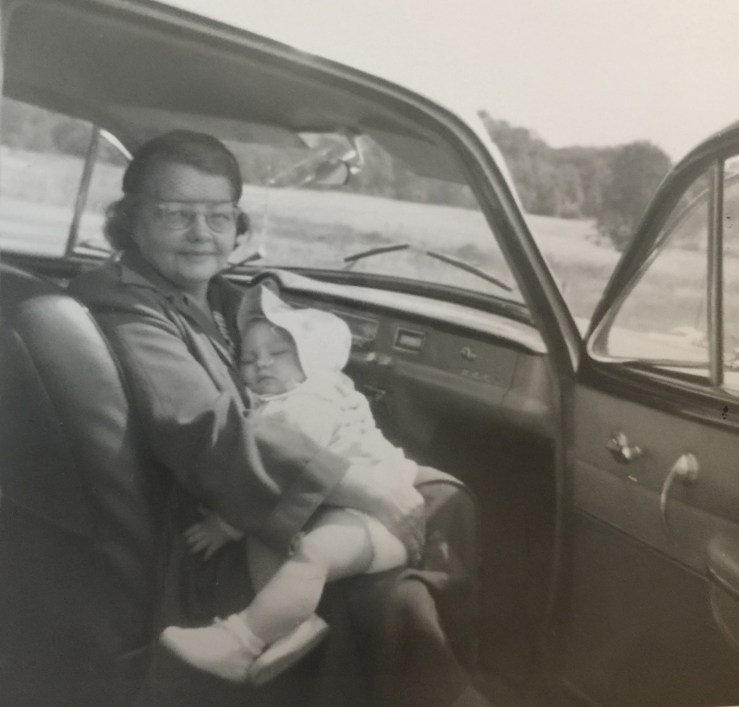


Darlingside recently came to central Oregon and they are wonderful. Some of their lyrics inspired me to imagine what Ivar Emmanuel Häkansson might have been thinking as he left Sweden forever, made his way by train to England, and boarded the Mauretania for America. Are there stories in your own family history you are perhaps meant to unearth?
Many thanks to Amelie Sandin, Pär Sandin, Jan-Åke Stensson, Jan Andersson, Camilla Haglund, Ulrika Söderhagen, Gunvor Johansson, Irene Svensson, Adam Nyman, and all the kind Swedes we met. The few hours we spent together were too short. Thank you to Sandra Adamson Easter for writing Jung and the Ancestors, a treasure I’m still unpacking.

Next up, in my final post about exploring our ancestry, I’ll write about our trip to Sicily (my father’s ancestral land), my cousin’s Sicilian wedding, and what my son and I gained from our family heritage search in Sweden.


